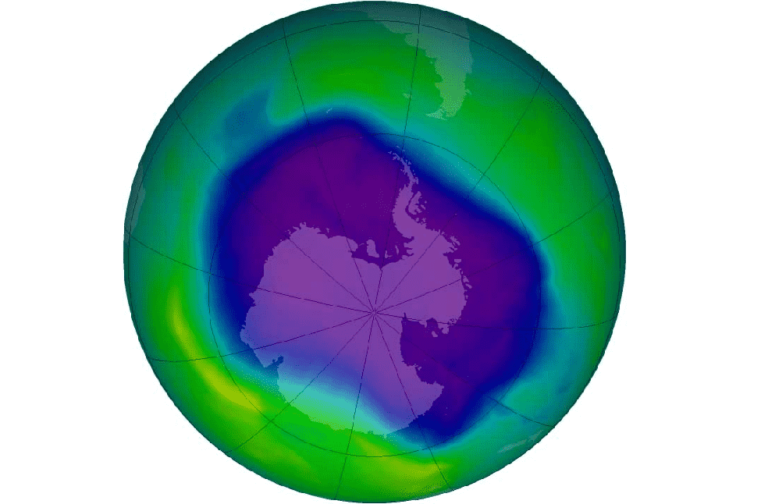Antarctica: A recent report from United Nations revealed that the earth’s protective ozone hole over Antarctica is healing and it will be completely fixed in about 43 years.
The scientific assessment conducted every four years found recovery in progress more than 35 years after every country in the world pledged to stop producing chemicals that deplete the ozone layer in the Earth’s atmosphere.
“In the upper stratosphere and in the ozone hole, we see things getting better,” Mr. Paul Newman, co-chairman of the scientific assessment, remarked. The report given on 9th January 2023 at the American Meteorological Society convention in Denver states that the improvement is gradual.

The global average amount of ozone 30KM (18 miles) high in the atmosphere won’t be back to 1980 pre-thinning levels until about 2040, the report noted. It won’t be back to normal in the Arctic until 2045. The report cited that the giant hole in the layer that develops every year over Antarctica won’t be fully fixed until 2066.
The attempts to heal the ozone hole have long been lauded by scientists and environmentalists as one of humanity’s greatest ecological triumphs. The Montreal Protocol, which forbade a class of chemicals frequently used in refrigerants and aerosols, was the basis for the initiative.
A third generation of those chemicals, called HFC, was banned a few years ago not because it would eat away at the ozone layer but because it is a heat-trapping greenhouse gas. The new report says the ban would avoid 0.5 to 0.9 degrees Fahrenheit (0.3 to 0.5 degrees Celsius) of additional warming.
The report also cautioned that attempts to cool the world artificially by spraying aerosols into the sky to reflect sunlight would cause the ozone layer in Antarctica to deplete by as much as 20 percent.



